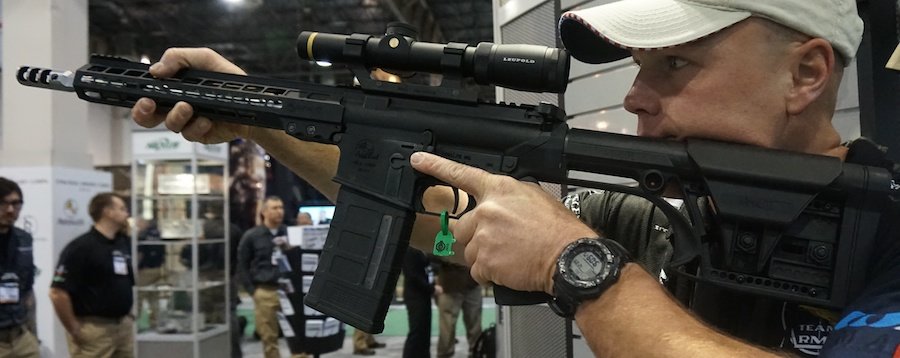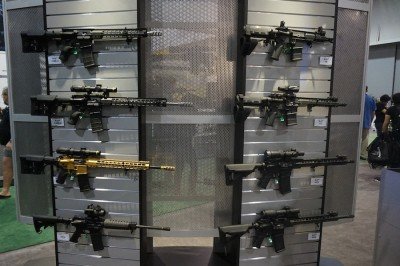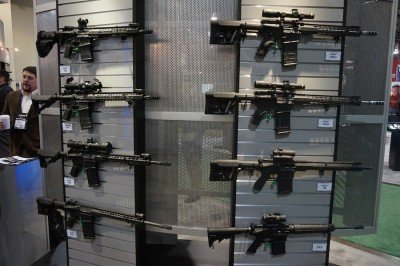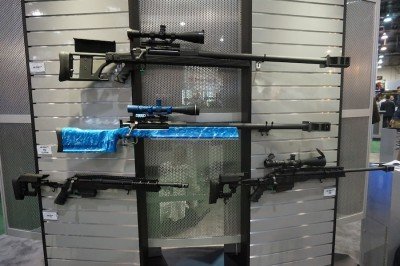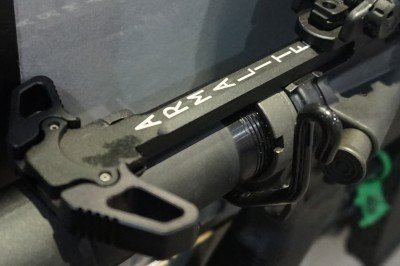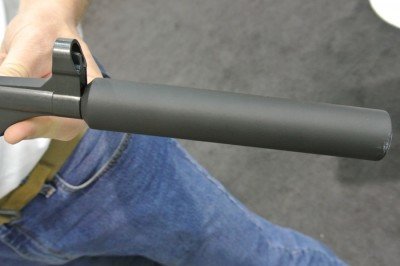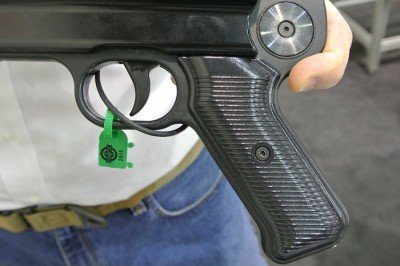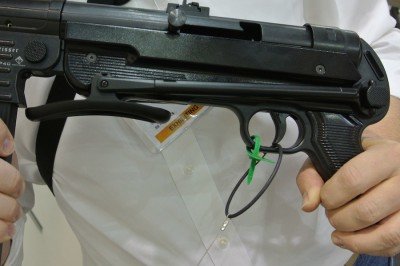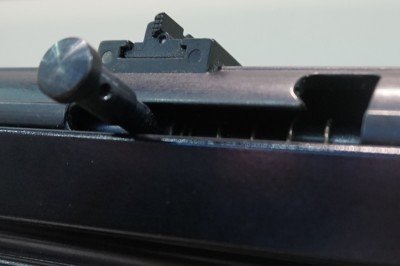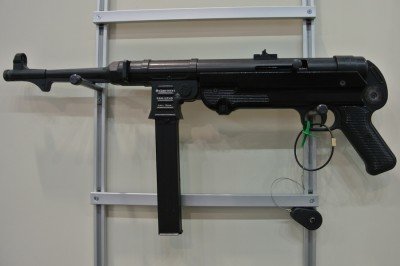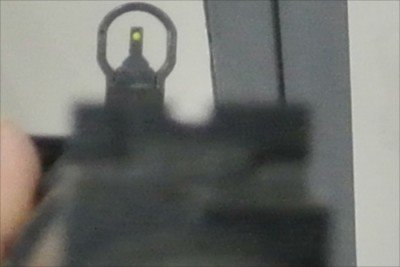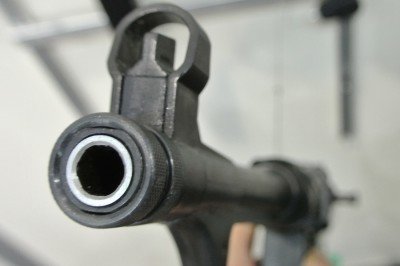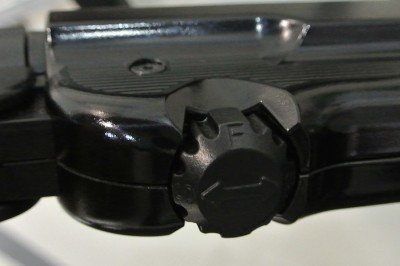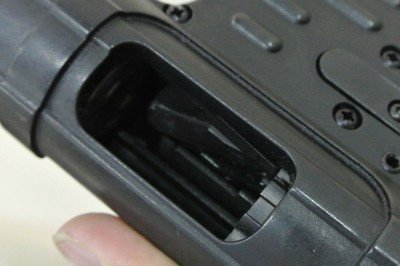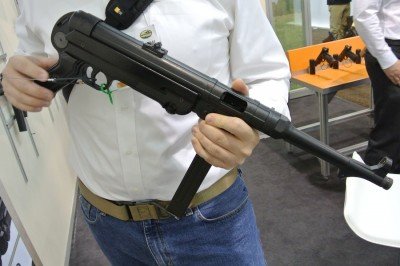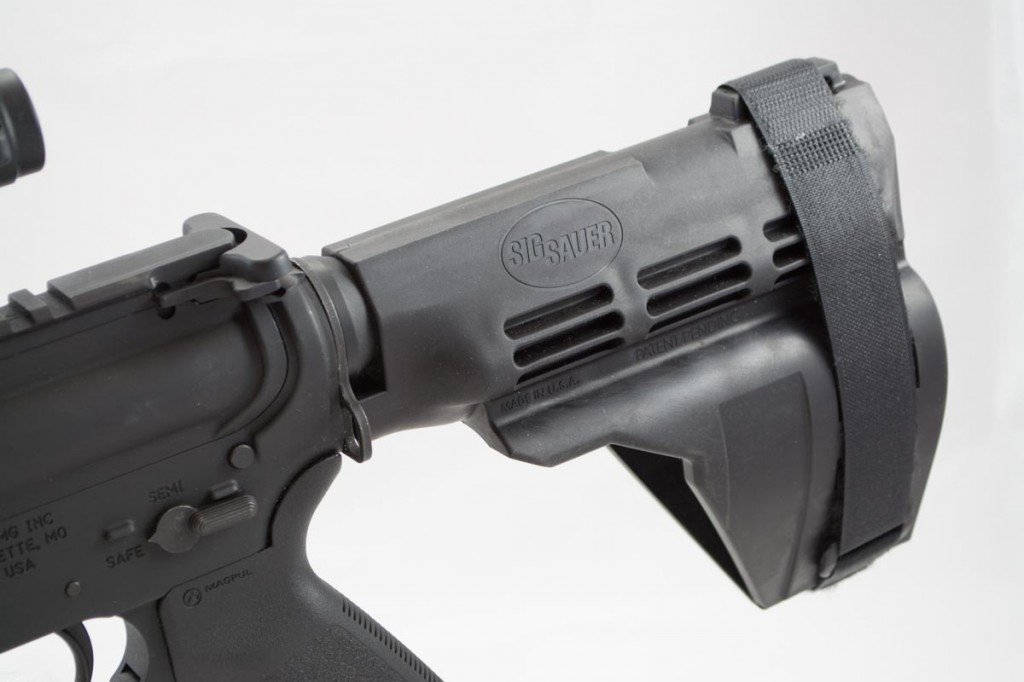Specifications
- Manufacturer: Smith & Wesson
- Model: 686 Plus (Performance Center)
- Frame Size: L-Frame
- Caliber: .357 Magnum / .38 Special +P
- Action: Double Action / Singe Action
- Capacity: 7 Rounds
- Barrel Length: 2.5 inches
- Front Sight: Red Ramp
- Rear Sight: Adjustable
- Overall Length: 47.5 inches
- Grip: Wood
- Weight: 35 ounces
- Barrel Material: Stainless Steel
- Cylinder Material: Stainless Steel
- Frame Material: Stainless Steel
- Finish: Matte Glass Bead Blast
- M.S.R.P.: $1,089
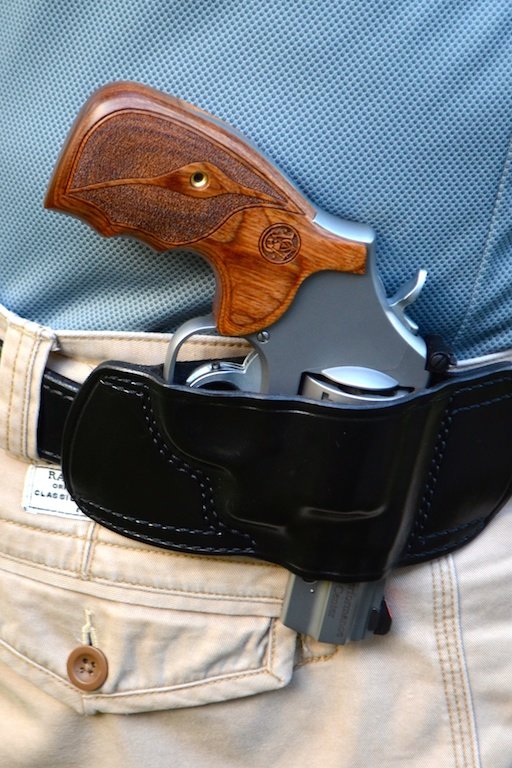
There are many existing holster options for an L-frame revolver.
Snubby revolvers have been a mainstay of concealed carry since the
introduction of the original Smith & Wesson “Chief’s Special” in
1950. Although immensely practical as a defensive handgun, the classic
snubby revolver has always suffered from a few serious drawbacks–most
notably, having a limited ammo capacity, and being difficult to shoot
well. However, a little bit of modern technology and a lot of meticulous
attention from the talented gunsmiths in the Smith and Wesson
Performance Center have elevated the classic snubby revolver to a new
level.
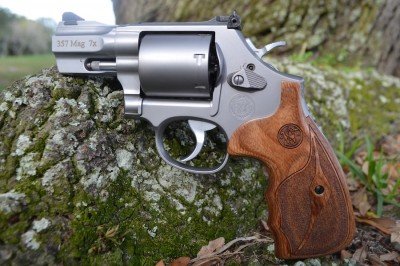
The Performance Center snub is distinguished by a beautiful unfluted cylinder.
This Performance Center 686 Plus firmly straddles the line between
old school and modern design. At its core, this revolver is a
stainless-steel double-action revolver with wood grips and iron sights.
But this 686 Plus has a capacity of seven rounds in the same diameter
cylinder that used to only fit six. Combine that increased capacity with
the magic of some fine-tuning in the Performance Center, and you have a
thoroughly modern defensive revolver.
Better Features
Of course, this PC 686 Plus is considerably larger than the classic
5-shot snubby revolver. At 7.5 inches long and nearly 35 ounces in
weight, this gun is not suited for pocket carry. However, if you are
willing to carry a larger revolver, the size increase pays huge
dividends. The 686 Plus has good-sized wood stocks that will fit even
large hands. And, the larger “L-frame” makes for a more comfortable grip
and trigger reach than small-frame snubbies.
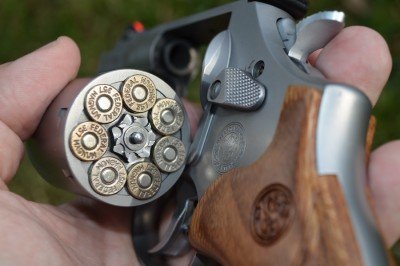
Seven rounds of .357 Magnum is quite a bit of firepower.
Since 1996, Smith & Wesson has offered L-frame .357 Magnum
revolvers in six or seven shot capacities. Although the cylinder
diameter is the same, modern advances in materials technology have
allowed the cylinder walls to be thinned enough to fit an extra round.
While some traditionalists still prefer the traditional 6- round
L-frame, when it comes to a defensive revolver, the extra round is a
huge benefit. By comparison, the 686 Plus has 40% more capacity than a
typical small-frame snub nose revolver. With seven rounds on tap, the
686 Plus is approaching the capacity of most single-stack semi-auto
pistols suitable for concealed carry. All of a sudden, carrying a
revolver instead of a semi-auto doesn’t seem like so much of a
compromise in ammunition capacity.
Perhaps the most distinguishing feature of this particular 686 Plus
is the extra attention from Smith & Wesson’s talented Performance
Center gunsmiths. Performance Center guns are Smith & Wesson’s best
products, designed for their most demanding customers. This translates
into a high level of fit and finish, but more importantly, a well-tuned
action. This type of refinement is particularly valuable in a
double-action revolver, which can have a long and heavy trigger. The
Performance Center tuning produces a light and smooth trigger pull.
Together with the smaller required rotation of the 7-shot cylinder, this
686 Plus trigger is a delight. I have experienced better revolver
triggers on finicky target guns, but the Performance Center guns strike a
proper balance between a light trigger and rock solid reliability.
The Performance Center snub is adorned with a few distinguishing
cosmetic features, like the unfluted cylinder and the slab-side barrel.
The gun also sports an engraved Performance Center logo on the left
side-plate, and a laser etching on the barrel shroud. Both give the
revolver a unique custom appearance.
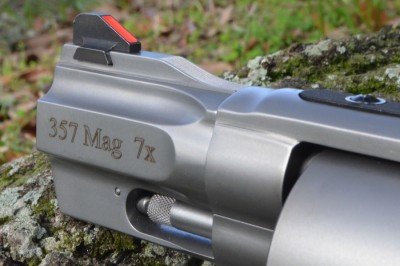
The 2.5 inch barrel a still produces muzzle velocities over 1,100 feet per second.
Better Performance
Shooting a snubby revolver is usually a challenge. Shooting a .357 Magnum snubby revolver is
always
a challenge. I have mostly given up on shooting small-frame Magnums,
unless I am required to do so. It can be done, but I am not a fan.
Shooting .357 Magnum rounds from an L-frame snubby revolver, however,
is a far better experience. The additional weight, along with the
larger frame and grips, make a big difference. Although shooting Magnums
will still definitely get your attention, the gun is manageable with a
proper crush grip. Regardless, a snubby Magnum revolver is not well
suited to anyone who is recoil sensitive. At least you always have the
option of shooting .38 Special +P, if desired.
Even with the short barrel, this 686 Plus offers strong ballistic
performance with Magnum loads. I tested four different brands of premium
defensive ammo, and all produced average muzzle velocity in excess of
1,100 feet per second. At these velocities, you should be able to expect
excellent performance from modern expanding jacketed hollow point
bullets.
The 686 Plus is also exceptionally accurate for snubby. I had no
problem with drilling out the x-ring of a standard NRA target at 7
yards. Similarly, a steel plate rack at 10 yards can be cleared with no
problem. Even at 25 yards, head shots on a silhouette are easy to come
by. This is due in part to the revolver’s excellent adjustable rear
sight, and high visibility red ramp front sight.
This revolver is also set up for using moonclips, which hold all
seven rounds as a single unit for ease of loading and unloading. A
discussion of the pros and cons of moonclips is unfortunately beyond the
scope of this article. The utility of moonclips in a defensive revolver
is open to debate–but there is no drawback to having the cylinder cut
to accept them. With this 686 Plus, you have the option of using
moonclips or not.
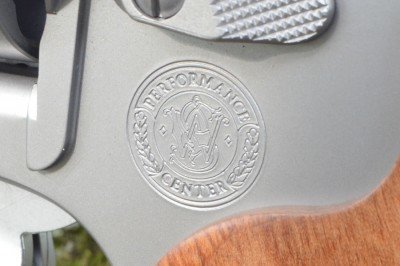
The Performance Center logo is tastefully applied to the left side.
Better Snubby
While not really fair to compare this gun to a traditional
small-frame snubby revolver, that is a natural comparison. The PC 686
Plus snub is much easier to shoot, more accurate, and more powerful.
With seven rounds of .357 Magnum on tap, this gun compares favorably
with the firepower of many semi-automatic handguns. If you are a
“revolver guy,” and want to carry a wheel gun, you don’t have to feel
under gunned with this 686 Plus.
Prices of quality revolvers have been creeping up in recent years. A
standard 686 Plus snubby retails for $849. Performance Center guns,
however, always command a premium price. The PC version of the 686 Plus
snub retails for $1,089. For the extra $240, you get wood grips,
different sights, a cylinder cut for moonclips, and a hand tuned action.
In my opinion, the extra cash is very well spent. As with any Smith
& Wesson firearm, the 686 Plus is covered with a lifetime service
policy, and their customer service is some of the best in the business.
Carrying a snub nose revolver is always a compromise of some kind.
The Performance Center 686 Plus addresses some of these shortcomings
with additional capacity and ease of use. Unfortunately, that additional
capability comes in a package much larger than the traditional snubby
revolver. If you can cope with the additional size and weight, this is a
remarkable carry gun. A blend of old and new technology, with some
custom craftsmanship thrown in, makes this 686 Plus a better snubby, and
a great choice for carry.
The author would like to thank Winchester (www.winchester.com),
Federal (www.federal premium.com), and Hornady (www.hornady.com), for
providing ammunition for testing. All shooting was done at the Southern
Exposure training facility in Lakeland, Florida
(www.southernexposuretraining.com).
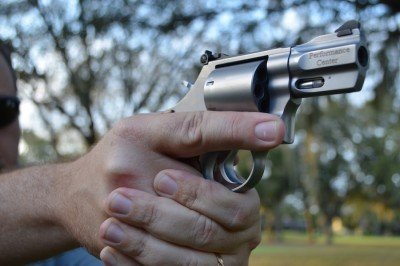
This snub feels great in the author’s large hands.
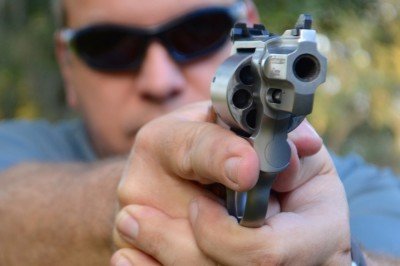
The business end of a .357 Magnum will get your attention!
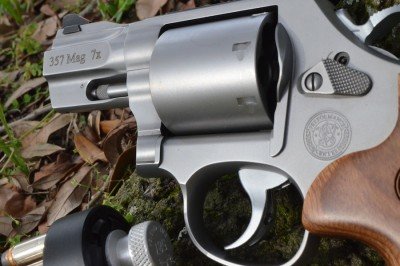
The Performance Center snub is distinguished by a beautiful unfluted cylinder.
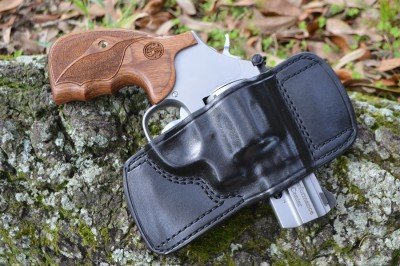
The author carried the 686 Plus in a simple belt slide holster from Don Hume.
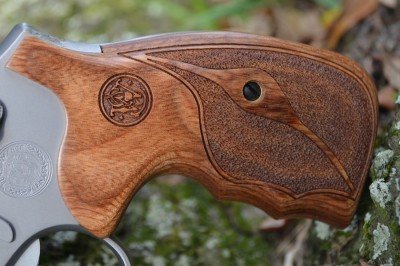
The wooden grips on the 686 look good and offer excellent grip.
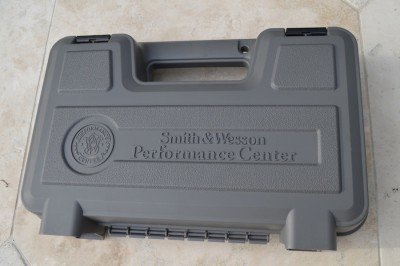
Performance Center guns come in a gray hard case.
